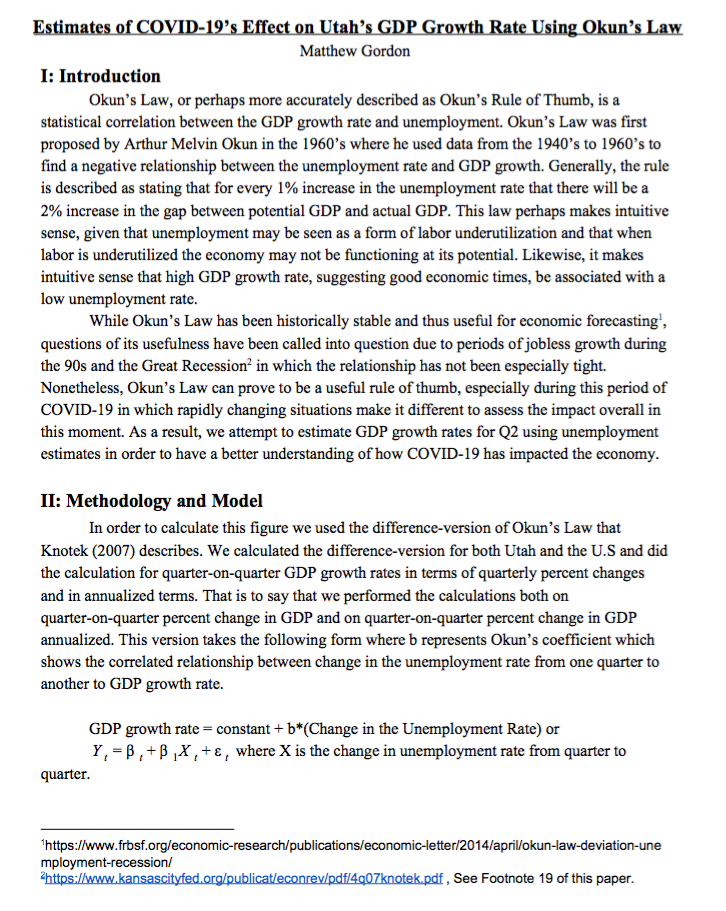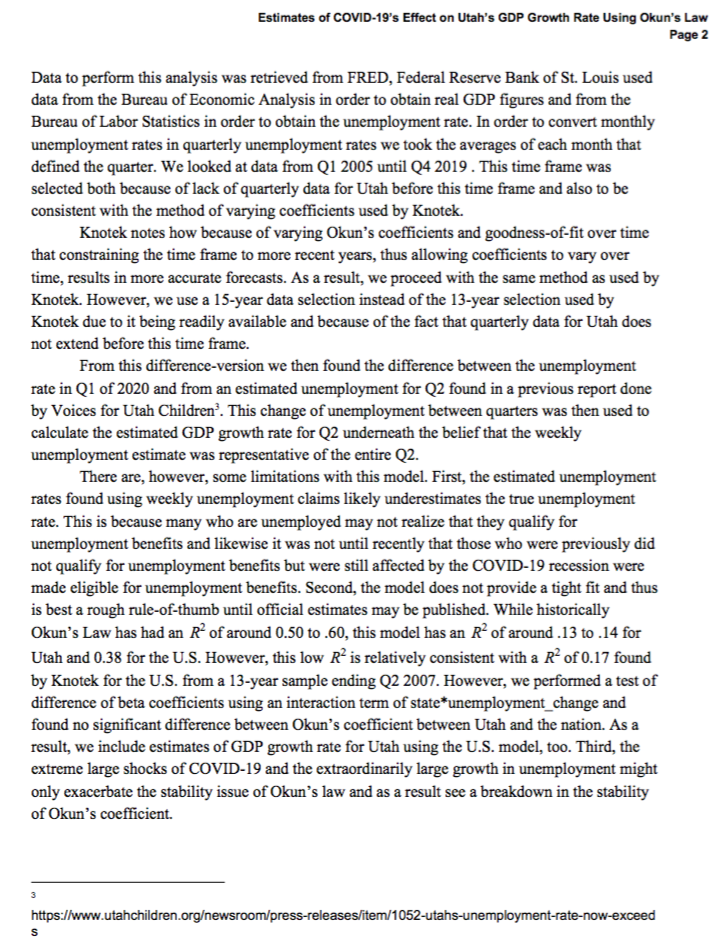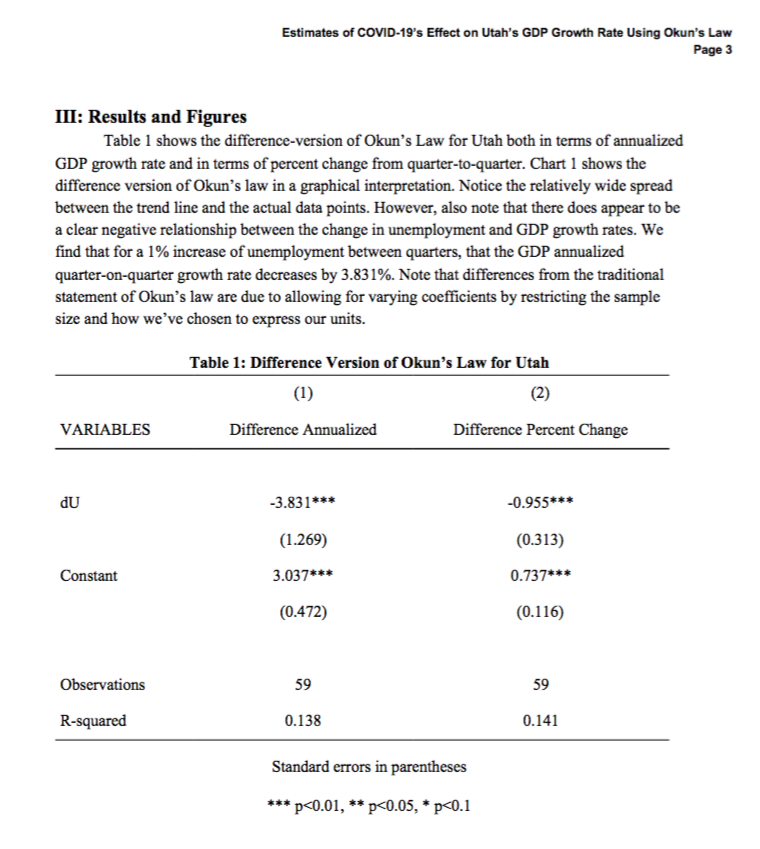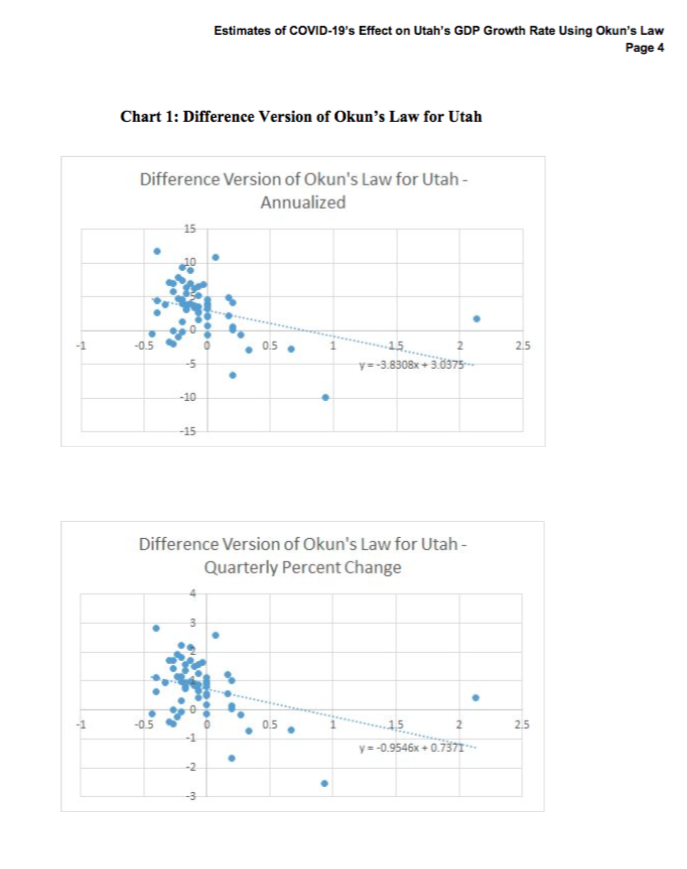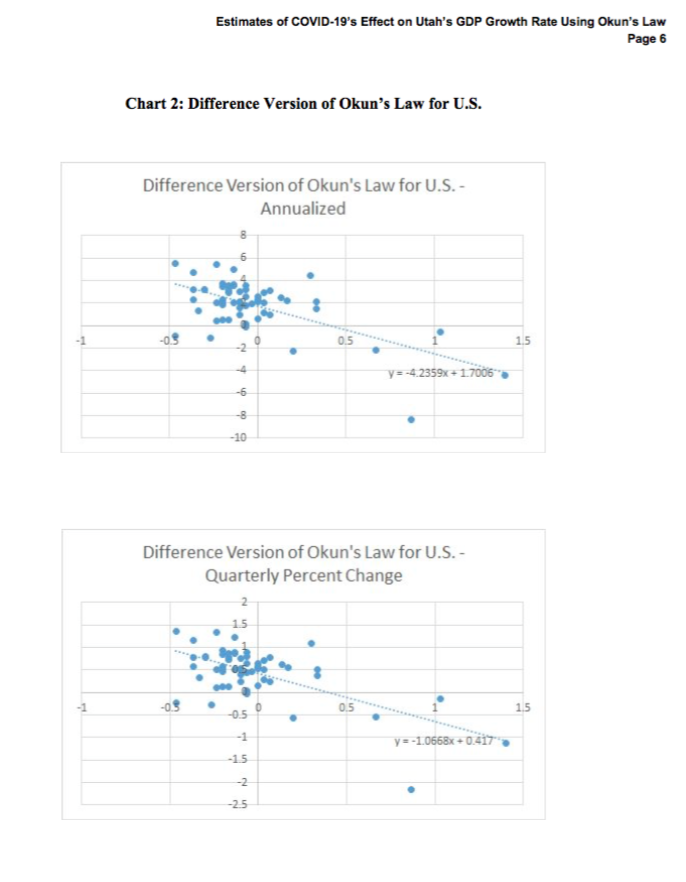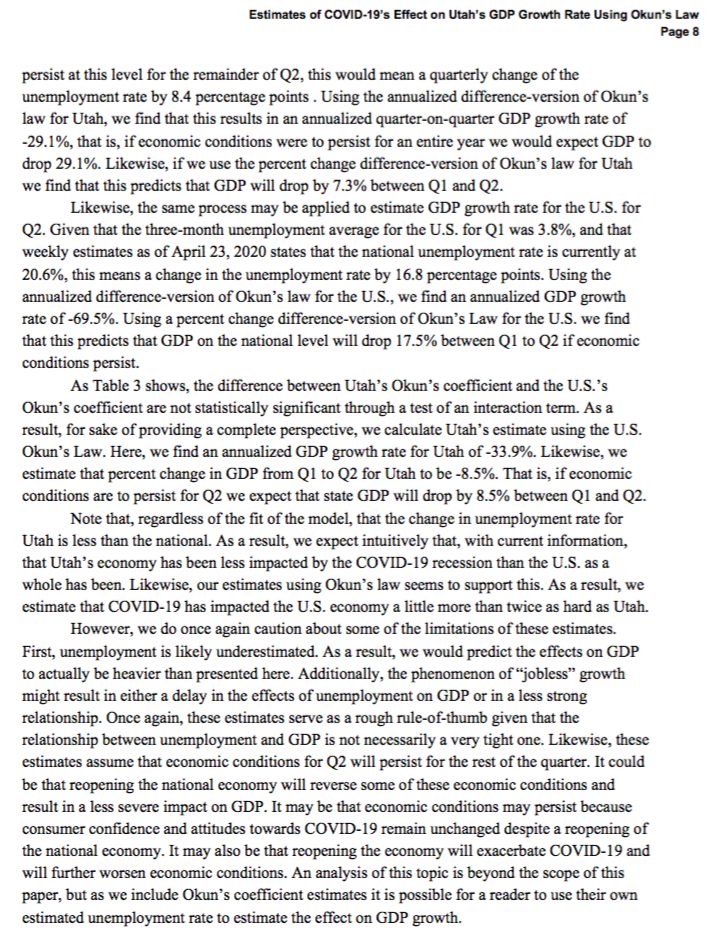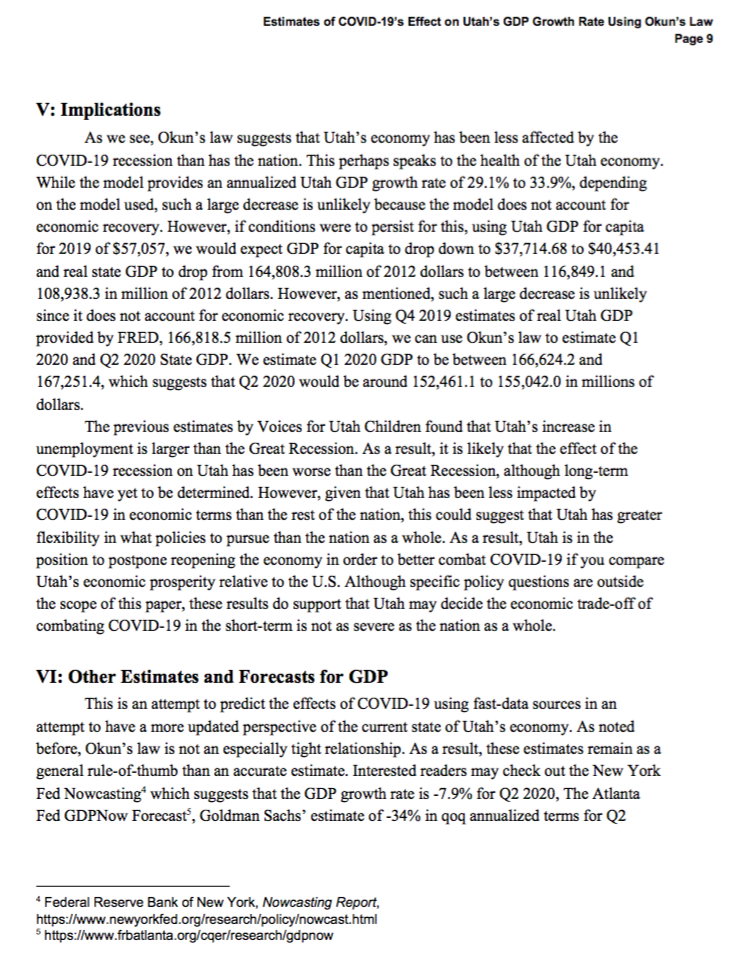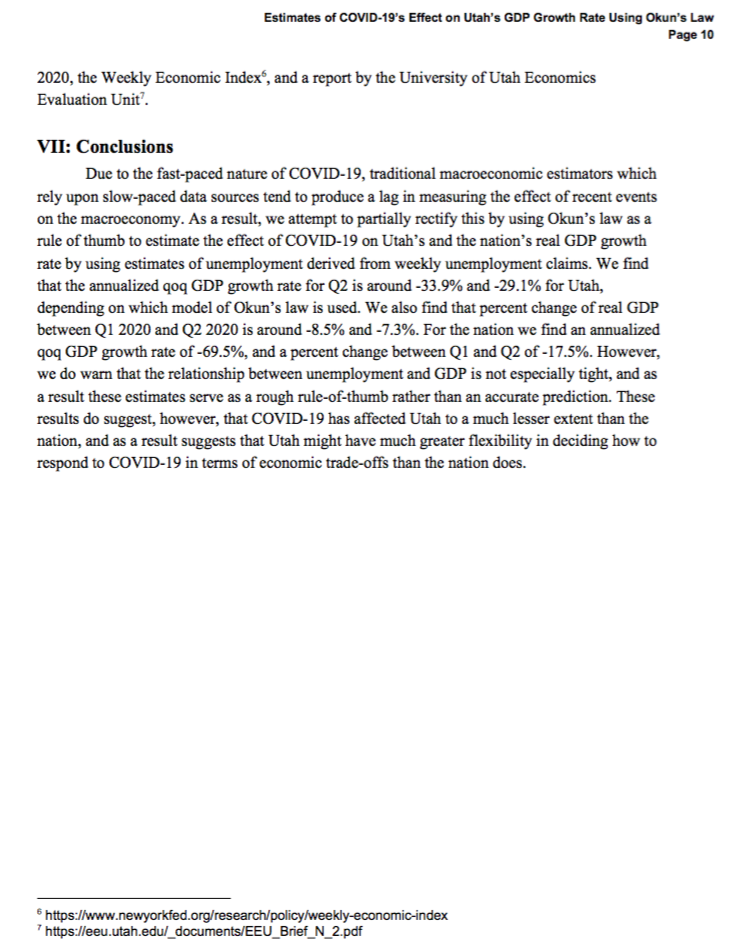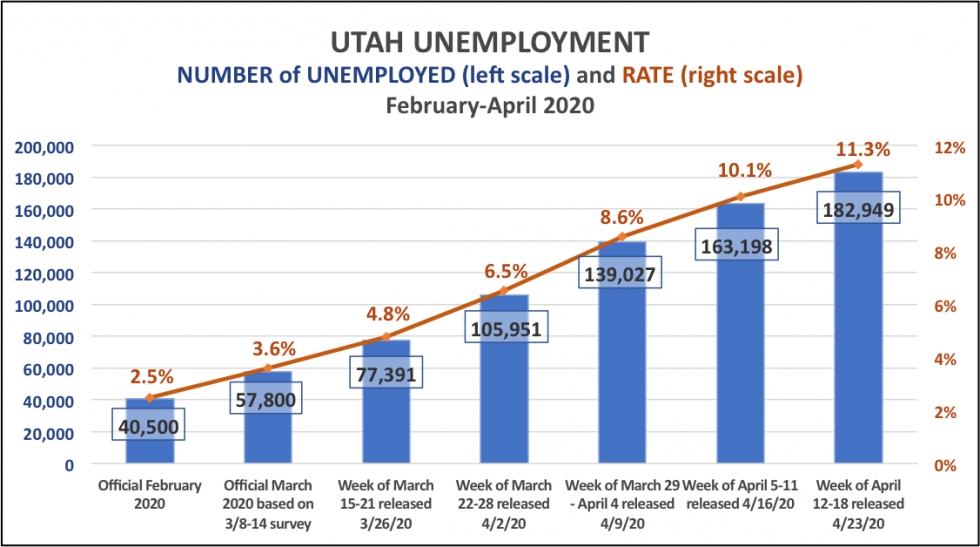Utah Unemployment and Economic Projections updated April 27, 2020
By Matthew Gordon, Connor Hill, and Matthew Weinstein
April 27, 2020
The weekly unemployment filing data released Thursday, April 23 for Utah and the nation saw an easing of the pace of new unemployment filings, though they continued at a very high level. Using the same methodology as in our April 17 release, we calculated the current unemployment rates for Utah and the nation, which appear in the charts below. (See the April 17th release for a full discussion of the methodology involved.)
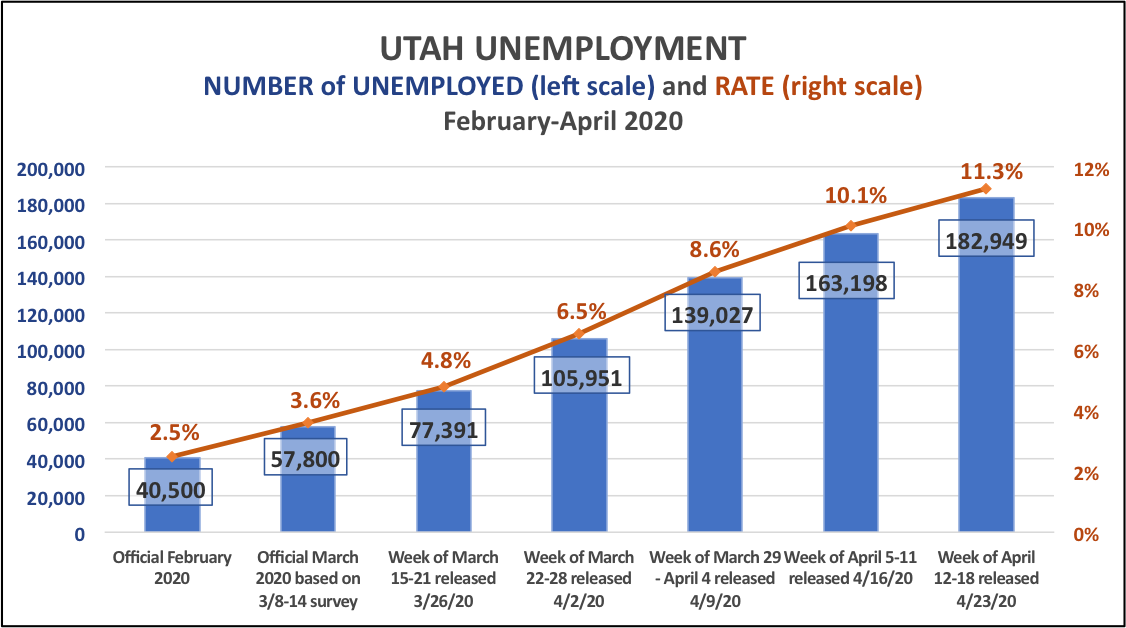
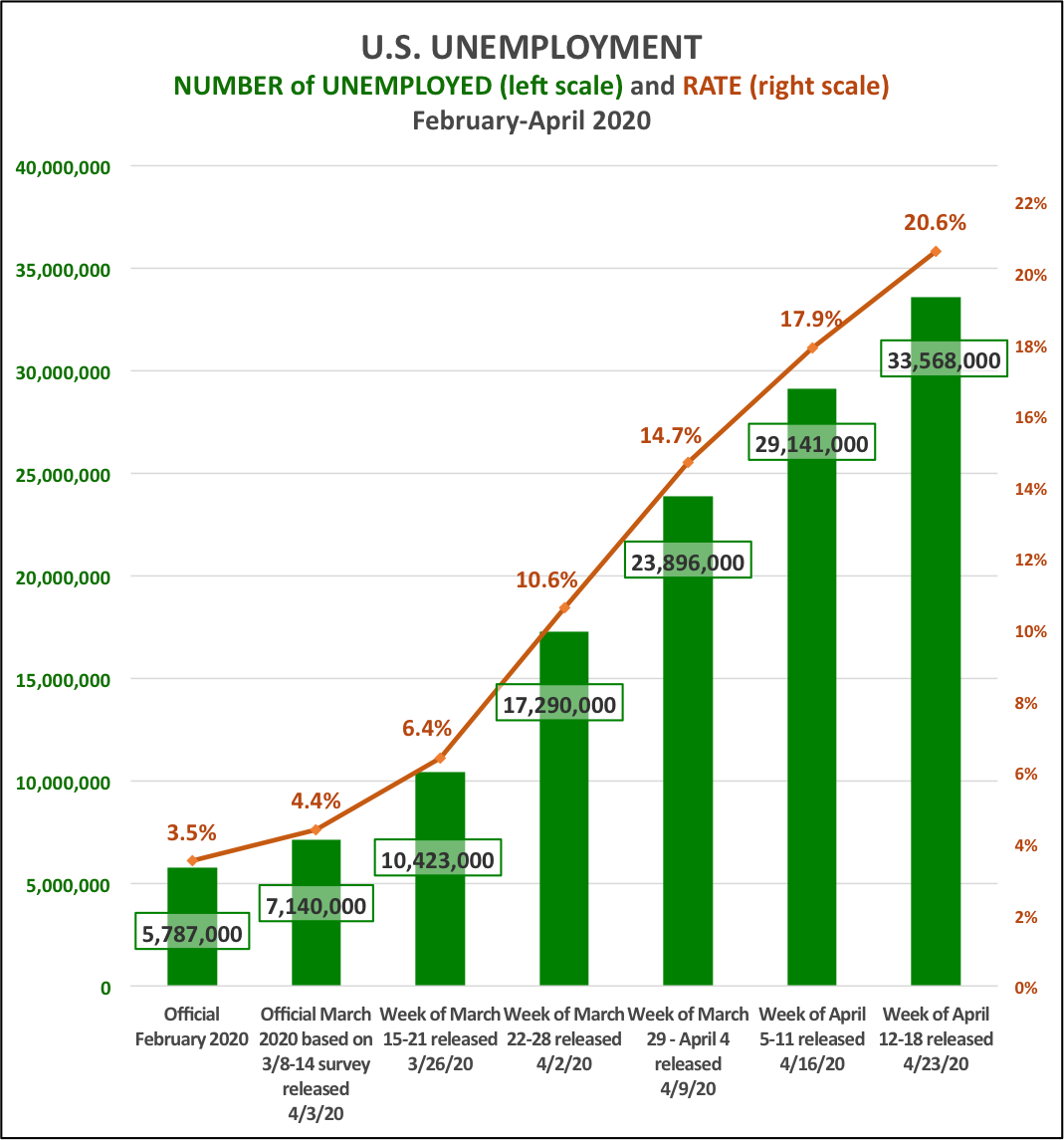
As we noted in our April 17th release, Utah's unemployment rate has risen in the last two weeks well above its peak level of 8.4% set in early 2010 during the last recession. However, we can take some comfort in the fact that Utah's unemployment rate has reached a level that is just over half (55%) of the national rate.
What conclusions can we draw from this evidence of how Utah's economy is performing thus far in the Coronavirus Recession about the other economic indicators that we discussed in our April 1, 2020 report? That report, applying national projections at that time to Utah, found that Utah could expect to see the following economic impacts in 2020:
-
- over $15 billion of lost GDP for Utah this year compared to projections
- household income loss averaging about $8,000 for Utah's roughly 1 million households compared to the pre-coronavirus projection
- a loss of roughly $1.3 billion of state tax revenue in the calendar year compared to pre-recession projections, which impacts two fiscal years -- FY 2020 (which ends June 30) and FY 2021 (which begins July 1, 2020)
Yet now we see that Utah's economy seems to be getting hit only about half as hard as the national economy. So does that mean that we can now cut in half our April 1 projections listed above? Unfortunately, our conclusion is that no, we cannot do that, for one simple reason: The national picture that has emerged over the past several weeks since the late-March projections from which our April 1 figures were derived seems to be about twice as bad as projected. For example, the March 31 Goldman Sachs projection saw the national unemployment rate averaging 13.2% in the second quarter (Apr-Jun), compared to 3.7% in the first quarter (Jan-Mar). But instead, as we can see in the chart above, the national unemployment rate is already 21% and still rising, just weeks into the second quarter. Based on this trend, and applying Okun's Law about the relationship between changes in unemployment and changes in GDP (discussed in greater detail in Matthew Gordon's paper below), we estimate that the national decline in GDP in the 2nd quarter of this year will be about double the 34% annual rate projected by Goldman Sachs. Thus, even though Utah is doing only half as badly as the nation, if the national picture is twice as bad as we thought on April 1, then that dictates that we stick with the projections bulleted above for how Utah will be impacted this year.
Needless to say, no one can predict with a high degree of confidence how the nation or Utah will come out by December 31 (not to mention how the economic situation will develop into 2021), given the unprecedented nature of the current circumstances. But Voices for Utah Children's economic analysis team will continue to monitor the indicators and trends and provide policymakers and the public with our best estimates of how our economy seem likely to be affected, with a particular emphasis on how that will be experienced by low- and moderate-income families whose children are most vulnerable to economic disruptions.
About the authors:
Matthew Gordon is a sophomore University of Utah undergraduate Economics and Mathematics double-major currently interning with Voices for Utah Children.
Connor Hill is a University of Utah Economics Master’s degree student who received his Bachelor’s degrees in Economics and Political Science from the U in 2019. He is also currently interning with Voices for Utah Children.
Matthew Weinstein, MPP, is state priorities partnership director on the staff of Voices for Utah Children, where his duties include overseeing the organization’s economic analysis program.
Note: The paper below, authored by Matthew Gordon, explains Okun's Law regarding the relationship between changes in unemployment and changes in economic output and its application to Utah historically and in the current circumstances. The 10-page paper is also downloadable in ![]() pdf format here.
pdf format here.
